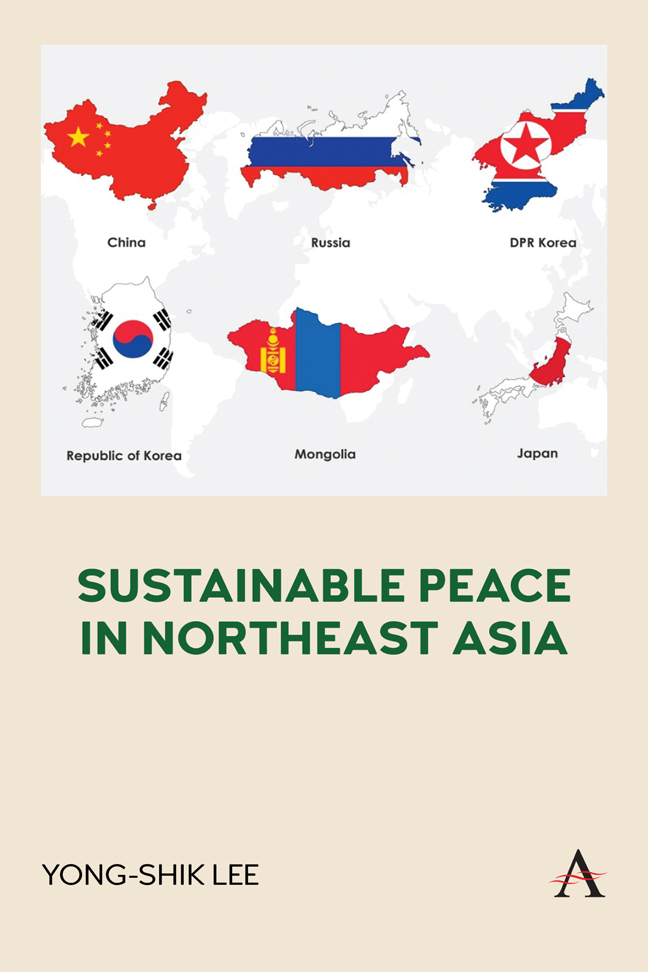Book contents
- Frontmatter
- Dedication
- Advanced Reviews
- About the Author
- Contents
- Figures
- Tables
- List of Abbreviations
- Foreword
- Preface
- Acknowledgments
- 1 Introduction
- 2 The Heritage from the Cold War—North Korea and the Nuclear Crisis
- 3 The New Asian Paradigm or Return to the Old Asia—Rise of China and its Role in the Region
- 4 A New Balancer in the Region? South Korea at the Crossroads
- 5 A Power With Rising Concerns: Escalation of Tensions Between Japan and its Neighbors
- 6 Insiders from the Outside: The United States and Russia
- 7 A Hidden Player: Mongolia and its Role in the Power Dynamics of Northeast Asia
- 8 Pathway to Peace and Stability in Northeast Asia
- Notes
- Bibliography
- Index
5 - A Power With Rising Concerns: Escalation of Tensions Between Japan and its Neighbors
Published online by Cambridge University Press: 29 February 2024
- Frontmatter
- Dedication
- Advanced Reviews
- About the Author
- Contents
- Figures
- Tables
- List of Abbreviations
- Foreword
- Preface
- Acknowledgments
- 1 Introduction
- 2 The Heritage from the Cold War—North Korea and the Nuclear Crisis
- 3 The New Asian Paradigm or Return to the Old Asia—Rise of China and its Role in the Region
- 4 A New Balancer in the Region? South Korea at the Crossroads
- 5 A Power With Rising Concerns: Escalation of Tensions Between Japan and its Neighbors
- 6 Insiders from the Outside: The United States and Russia
- 7 A Hidden Player: Mongolia and its Role in the Power Dynamics of Northeast Asia
- 8 Pathway to Peace and Stability in Northeast Asia
- Notes
- Bibliography
- Index
Summary
5.1 A Restored Power
5.1.1 Economic restoration: From defeat in World War II to success in the global market
By the end of World War II, much of Japan had been destroyed. While the allied forces did not invade the main Japanese islands during the war, heavy U.S. bombing destroyed cities, villages, and much of its infrastructure. According to a Japanese government report on war damages, Japan lost 25 percent of its buildings and structures, 33 percent of its urban housing, 34 percent of its industrial machines, 81 percent of its commercial ships, 16 percent of its telegraph, telephone, and water supplies, 11 percent of its electricity and gas supplies, and 10 percent of its railroad and other land transportation. Over two million Japanese citizens also died during the war, while survivors suffered through food shortages and inflation. Economic production sharply decreased because of this war destruction. Figure 5.1 illustrates the low Japanese production of food, textiles, steel, and machinery in 1946 compared to its pre-war production.
The Japanese economy has gradually recovered since 1946. To foster recovery, the Supreme Commander for the Allied Powers (SCAP) initiated land reform in occupied Japan. Before the war, approximately two-thirds of the Japanese farmers did not own land. The SCAP's policy transferred land ownership to the farmers and improved farm tenancy practices. The reform was successful: the percentage of owner-operated cultivated land increased from 54 percent to 90 percent by 1950 (although the land reform had only a limited impact on agricultural production). An economically more significant development was the outbreak of the Korean War in 1950. The destructive war was a tragic event for the Koreans, but it provided Japan with decisive momentum for economic recovery. Due to its proximity to the Korean peninsula, Japan served as the supply base for U.N. forces, and money poured into the Japanese economy for supplies from Japanese producers. As a result, production increased by nearly 70 percent during the war—as much as US$ 590 million in 1951 and over US$ 800 million in 1952 and 1953 (which amounted to 60 to 70 percent of its exports at the time) was pumped into the Japanese economy. Thanks to this wartime economic boom, the Japanese economy recovered to its pre–World War II level by 1952.
The Japanese economy continued to grow—an increase of 2.8 to 4.8 times every decade as shown in Table 5.1
- Type
- Chapter
- Information
- Sustainable Peace in Northeast Asia , pp. 91 - 116Publisher: Anthem PressPrint publication year: 2023



